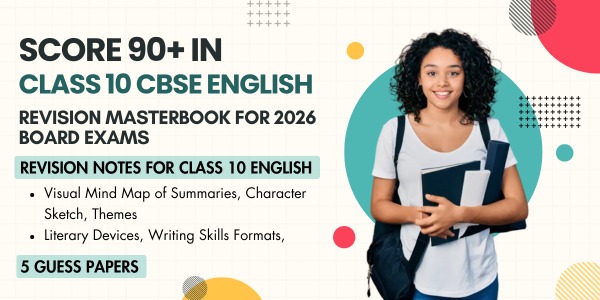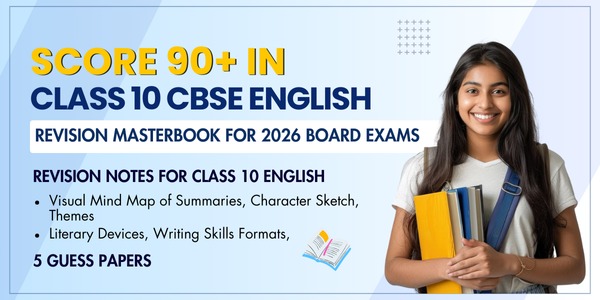CBSE class 10 English Poem Mirror by Sylvia Plath
(The lesson has been deleted from the Communicative English syllabus of CBSE)
CBSE class 10 English Poem Mirror – detailed line by line explanation of the poem along with meanings of difficult words and literary devices used in the poem. Also, the explanation is followed by a Summary of the lesson. All the exercises and Question and Answers given at the back of the lesson.
By Ruchika Gupta

About the author

Sylvia Plath
1932-1963
Born in Boston, Massachusetts
Sylvia Plath was one of the most renowned and influential poet, novelist, and short story writer of the 20th century. She was married to fellow poet Ted Hughes. Plath was clinically depressed for most of her adult life and she died by committing suicide.
Poem Mirror Class 10 CBSE English Poem Summary and Background
Mirror Poem Explanation
Poem –

I am silver and exact. I have no preconceptions.
Whatever I see I swallow immediately
Just as it is, unmisted by love or dislike.
I am not cruel, only truthful –
The eye of a little god, four-cornered.
Word meaning
Silver: colour of the mirror
Exact: accurate
Preconceptions: expectations
Swallow: absorb
Unmisted: without mist, clear
Cruel: inhuman
Explanation of the above poem – The mirror says that it is silver in colour and is exact. It is precise and reflects everything that appears in front of it, as it is. It is unbiased, does not have any feelings either hatred or love for anyone. If a person dislikes his reflection in the mirror, it should not think that the mirror is cruel. The mirror clarifies this fact that it just reflects the person’s image as it is. It shows us our true appearance. It compares itself to God’s eyes which see equally in all the four directions and treat all things alike.

Poem –
Most of the time meditate on the opposite wall.
It is pink with speckles. I have looked at it so long
I think it is a part of my heart. But it flickers.
Faces and darkness separate us over and over.
Word meaning
Meditate: to think deeply
Speckles: small spots
Flickers: quick movements
Explanation of the above poem – The mirror says that most of the time it keeps on looking at the wall in front of it. It looks at it intently and so, it can make out the tiny pink spots on it which means that the mirror is so precise that it can find out the minutest flaws in anything that appears in front of it. The mirror says that it has been looking at the opposite wall over such a long period of time that it seems to the mirror that the wall is a part of it. (When one looks at a mirror from a distance, one can see the wall opposite the mirror in the mirror. The wall seems to be a part of the mirror). The mirror says that this feeling of the mirror that the opposite wall is a part of itself gets interrupted whenever a face or darkness comes in between them. When a person stands in front of the mirror, the opposite wall is no longer reflected in it and, so it does not remain a part of the mirror. Similarly, in darkness, no images are seen on the mirror’s surface and so, the opposite wall does not remain a part of the mirror.



Poem –
Now I am a lake. A woman bends over me,
Searching my reaches for what she really is.
Then she turns to those liars, the candles or the
moon.
I see her back, and reflect it faithfully.
She rewards me with tears and an agitation of hands.
Word meaning
Reaches: depth
Agitation: nervousness

Explanation of the above poem – In this stanza the mirror compares itself to a lake. Not only the quiet lake’s surface reflects everything, but it has depth also. A woman looks at herself in a lake to ascertain her physical appearance and beauty. The mirror shows her exact appearance – any spots, marks or signs of aging. The mirror says that the moon and the candle which praise a woman’s beauty are liars. They praise her physical appearance as their dim light overlooks these minute flaws. The mirror is true and shows her the reality which is bitter for her. In return for its truthfulness, the mirror gets tears and hatred in return from the woman.
Mirror CBSE Class X Poem Explanation, meanings and Literary devices
Poem –

I am important to her. She comes and goes.
Each morning it is her face that replaces the darkness.
In me she has drowned a young girl, and in me an old woman
Rises toward her day after day like a terrible fish.
Word meaning
Drowned: no longer exists
Terrible: extremely bad
Explanation of the above poem – The mirror is very important for a woman as she ascertains her looks in it. She looks at herself in the mirror often and the mirror says that every morning, the first object that comes in front of it after the dark night is the woman’s face. The mirror has seen the transformation in the woman’s appearance over the years. Her face of a young, pretty girl does not exist, but the mirror remembers it. With each passing day she is getting older and the signs of aging are becoming prominent on her face. Her future appearance of an old, ugly woman gets closer to her and it seems to be there in the mirror because one day when she will look at herself in the mirror, she will see it there only. The mirror compares the woman’s aged face to that a fish as both are ugly and no one wants to look at them.
Important Videos Links
Literary Devices in the poem
Personification – Mirror has been personified throughout the poem – ‘I am silver’, ‘Whatever I see I swallow’, ‘I am not cruel’, ‘The eye of a little god’, ‘I have looked at it’, ‘I think’, ‘I see her back’, ‘in me an old woman Rises toward her’. The candles and moon have been personified – ‘those liars, the candles or the moon’.
Simile – ‘an old woman Rises toward her day after day like a terrible fish’. The poet is comparing the old woman’s face to an ugly fish.
Alliteration – ‘Most of the time meditate’, ‘I see I swallow’, ‘
Repetition – ‘over and over’
Metaphor – ‘The eye of a little god’, ‘Now I am a lake’
Mirror Summary
The poet has personified a mirror which tells its story. It is silver in colour, accurate and truthful. It is not cruel and is unbiased like the God’s eyes. It looks at the wall in front of it for most of the time and can make out the tiny pink spots on it. The mirror feels that the wall is a part of itself, but the faces and spells of darkness separate them.
In the third stanza the mirror compares itself to a lake and says that like a lake it also has depth. A woman looks into the mirror to ascertain her beauty. The moon and the candles are liars as their soft, dim light overlooks her flaws and falsely praises her beauty. The mirror is true and shows all the flaws to her. The woman is disappointed to see her image in the mirror. The mirror gets the woman’s tears and hatred in return for being true.
The mirror is important to a woman as she often looks at her image in it. Every morning as the sun rises, she looks at herself to ascertain her beauty. Her past image of a pretty young girl no longer exists but it is there in the depth of the mirror. Her future image of an old, ugly woman gets closer to her with each passing day. It is there in the mirror and one day, she will see it in the mirror.
Also See: Julius Caesar – Class 10 English Explanation, Summary, Difficult Words
Mirror Question and answers
Q. On the basis of your understanding of the poem, answer the following questions by ticking the correct choice
(a) When the mirror is being described as being ‘unmisted by love or dislike’ we understand that the mirror is
- not misted
- not prejudiced
- has four angles
- is silver in colour
A. ii. not prejudiced
(b) The other word for ‘contemplation’ is………..
- contempt
- meditation
- mediation
- thoughtful
A. iv. Thoughtful
(c) When the mirror says ‘it has no preconceptions’ it means that:
- it reflects back an image objectively
- it modifies an image as it reflects it
- it beautifies an image as it reflects it
- it gives a biased view of a person/object
A. i. it reflects back an image objectively
Also See: Shady Plot – Class 10 English Explanation, Summary, Difficult Words
(d) The mirror has been called ‘a four-cornered god’ because:
- it is square shaped
- like God it watches you unbiased and fair from all four angles
- it reflects back all that it sees
- it never stops reflecting
A. ii. like God it watches you unbiased and fair from all four angles
(e) The ‘speckles’ refer to:
- a pink object
- the opposite wall which has spots on it
- pink spots in general
- a person with pink pimples
A. ii. the opposite wall which has spots on it
(f) The phrase ‘agitation of the hand’ suggests that the person is:
- very ill
- very upset
- very angry
- very happy
A. ii. very upset
(g) By saying ‘Now I am a lake’ the narrator wants to show that
(i) the poem is not only about external beauty but also the inside of a person
(ii) the lake can also reflect surfaces
(iii) the depth of the lake is important
(iv) the lake does not show as exact an image as a mirror
A. (iii) the depth of the lake is important
Answer the following questions briefly
Q: What is the poetic device used when the mirror says ‘I swallow’?
A: The poetic device used here is ‘personification’. The mirror is given a human character of swallowing to the mirror. This is done to magnify the mood of the poem.
(Attributing human characteristics to an inanimate object, animal, or abstract idea.)
Q: How does the mirror usually pass its time?
A: Most of the time the mirror looks intently at the wall which is opposite it. It looks so intently at it that it can even make out the tiny pink speckles on it and feels that the wall is a part of itself.
Q: What disturbs the mirror’s contemplation of the opposite wall?
A: The mirror’s continuous gaze upon the opposite wall is disturbed by two things:-
Firstly, the faces of people who walk up in front of the mirror and thus obstruct it’s view of the opposite wall.
Secondly, the darkness, as in absence of light, no images are formed on the mirror and so, the opposite wall’s image is not formed on it.
Q: Why does the mirror appear to be a lake in the second stanza? What aspect of the mirror do you think is being referred to here?
A: The mirror is like the calm lake because the lake also reflects images like a mirror.
The aspect of the mirror referred to here is that the mirror also contains many hidden secrets of the onlookers just like the secretive lake.
Q: What is the woman searching for in the depths of the lake?
A: The woman is trying to find out the minute flaws on her face. She is searching the depths in order to get back her past image, that of a young and beautiful girl but it no longer exists.
Q: How does the narrator convey the fact that the woman looking at her reflection in the lake is deeply distressed?
A: The poet conveys the woman’s distress by saying that she has tears in her eyes and she waves her hands in agitation.
Q: What makes the woman start crying?
A: When the woman looks at herself in the mirror, she sees changes in her appearance due to advancing age. These changes in her appearance are unbearable for her and make her cry.
Q: What do you think the ‘terrible fish’ in the last line symbolizes? What is the poetic device used here?
A: The ‘terrible fish’ symbolizes the woman with the changes in the her looks due to advancing old age. The face of the old woman is ugly due to wrinkles and lines and resembles the scaly skin of the fish.
The poet has used the poetic device of simile which brings out the comparison between the changes in a woman’s looks due to advancing old age and a terrible fish.
Q: List out the adjectives that have been used to describe the mirror. Add a few more adjectives to the list.
A: The adjectives used in the poem to describe a mirror are silver, exact, truthful, lake.
Some more adjectives for a mirror are precise, three dimensional, long, concave, compact.
Q: In the second stanza why has the narrator replaced the mirror with a lake? What is he/she trying to focus on?
A: The narrator has replaced the mirror with a lake as the lake also reflects images just like the mirror.
The poet is emphasizing on the depth of these as they have many secrets hidden in them.
Q. Find the various instances of personification used in this poem.
A. The instances of personification in the poem are as follows –
1. I swallow
2. I am not cruel
3. The eye of a little god
4. I have looked at it
5. I think
6. those liars, the candles or the moon
7. I see her back
8. in me an old woman Rises toward her
Q. Read the given lines and answer the questions that follow by ticking the correct choice:
A woman bends over me,
Searching my reaches for what she really is.
Then she turns to those liars, the candles or the moon.
What is the woman bending over?
- the mirror
- the lake
- the opposite wall
- the moon and the candles
A. i. the mirror
Why have the candles and the moon been called ‘liars’?
- because they make people beautiful
- they hide the blemishes of people with their soft light
- they hide the blemishes and make people look beautiful in their soft glow
- they can’t talk
A. iii. they hide the blemishes and make people look beautiful in their soft glow
Why does she turn to them in spite of calling them ‘liars’?
-
- the reality is too harsh for her to bear
- she is desperately looking for someone to comfort her
she wants to be told that she is still beautiful
- she can hide her signs of graying in their light
A. i.the reality is too harsh for her to bear
Important Questions Videos Links



